In today's retail landscape, you may find yourself weighing the benefits of traditional Cash On Delivery (COD) payments against the convenience and security of digital payment methods. While digital transactions offer streamlined processes and immediate confirmation, COD remains a preferred choice for some of your customers, despite the added financial pressure and risk it places on you. To navigate this balance, the COD Risk Control app is designed to empower you to set strategic thresholds for COD usage. This innovative tool aims to enhance the acceptance rate for COD orders, ensuring smoother transitions between COD and digital payments and minimizing the associated risks
Note
Only the Pro version is available.
Optimizing payment method selection
The moment a customer places an order, the risk control system activates, assessing the order against the thresholds you've set. If an order doesn't meet these criteria, the COD option will be disabled, and a customized message will guide the customer towards using a digital payment method instead. This proactive approach encourages a shift towards more secure and efficient digital payments, enhancing the shopping experience for both you and your customers.


Installing the Risk Control App
1. Access the App Store: From your Shoplazza Admin > Apps, click Visit App Store.
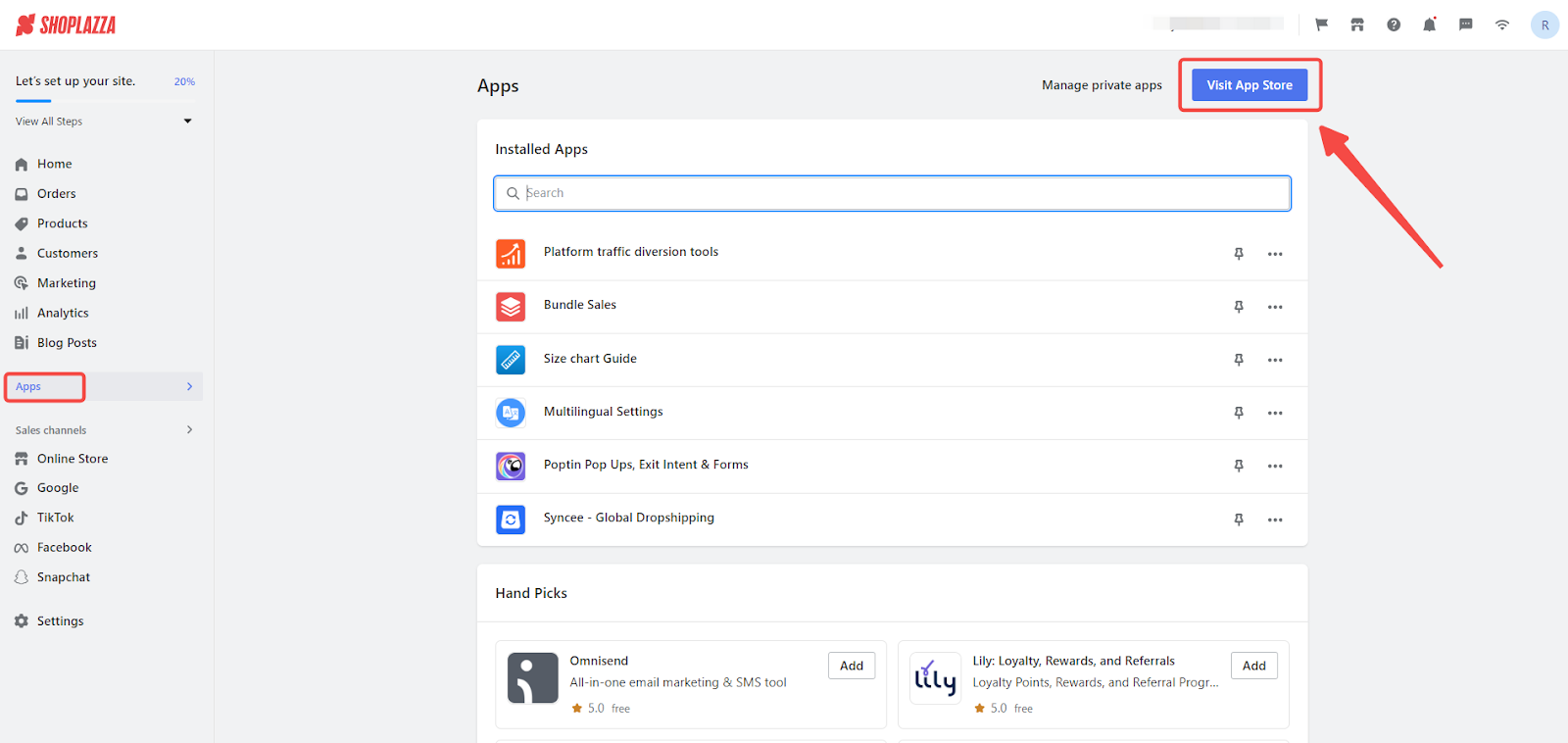
2. Find the app: Search for COD Risk Control in the search box and click Add app to add it to your store.

3. App installation: Click Install app to complete the installation.
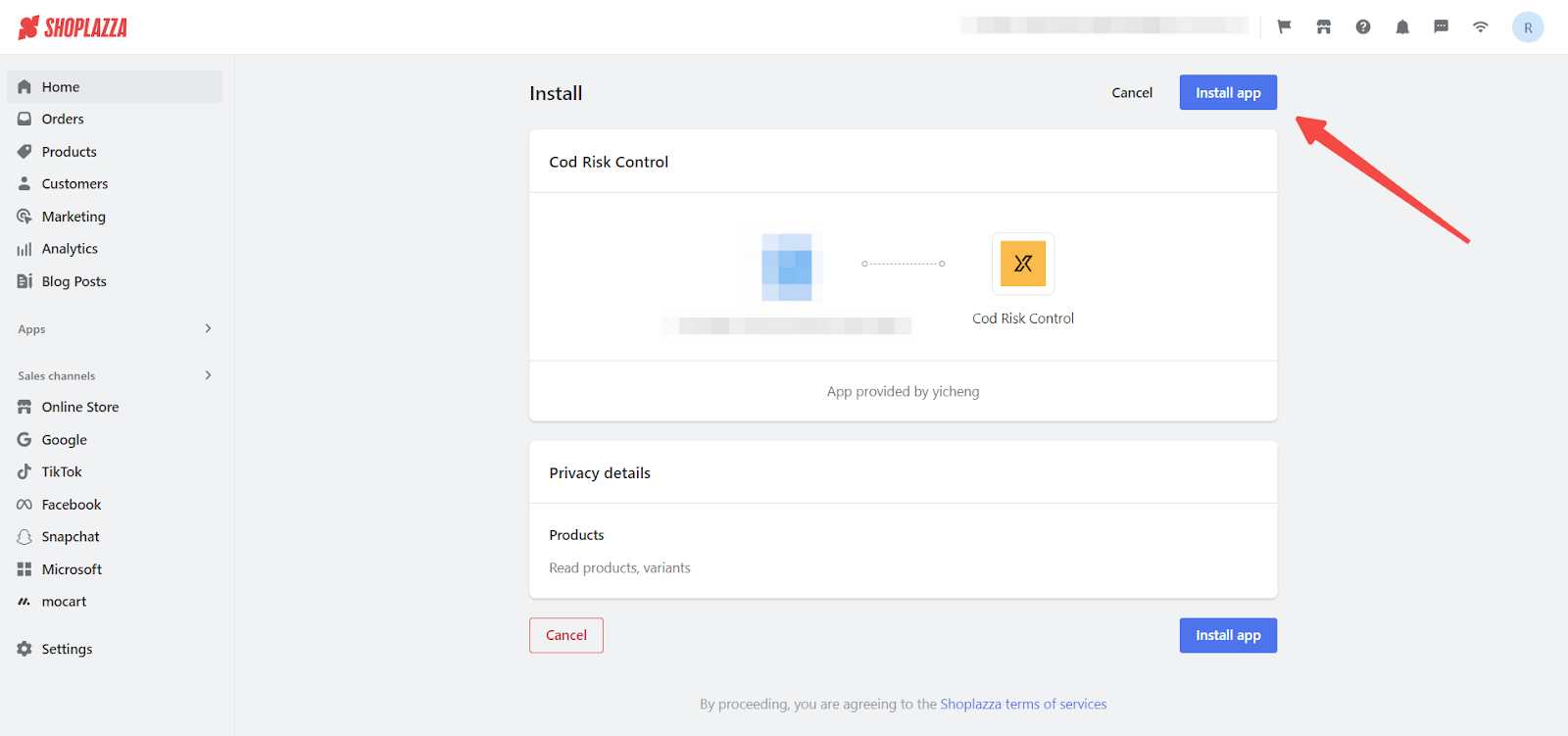
Guided setup process
After installing the app, a step-by-step guide assists you in configuring its settings for optimal use.
1. Welcome and initial configuration: Start by selecting Start configuration, followed by Update order statuses to ensure your orders reflect accurate, up-to-date statuses.
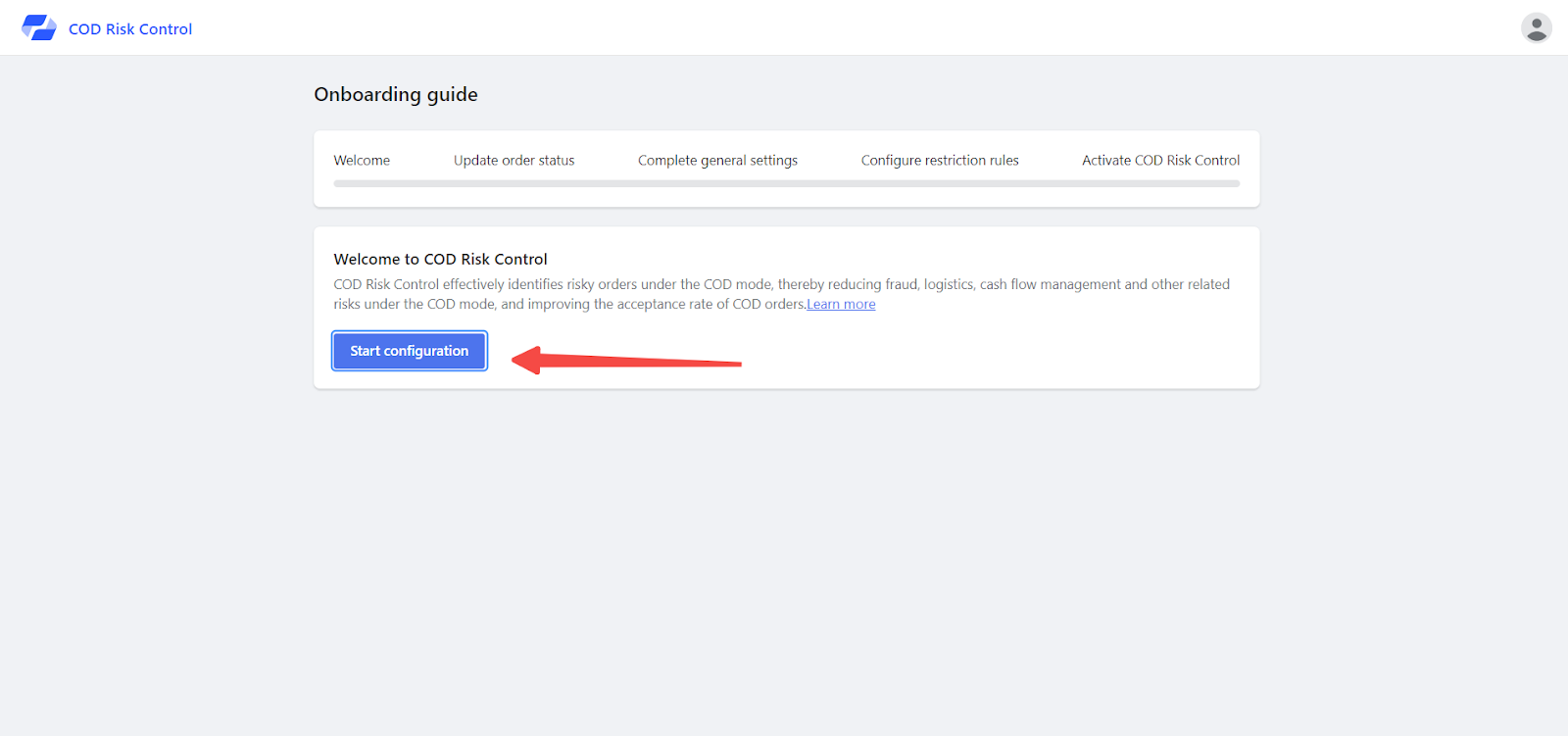
2. Update Order Status:
- Accurate order statuses are essential for effective risk control checks. Ensure your Shoplazza admin is up-to-date by utilizing the downloadable order import template designed for bulk updates. This template simplifies the process of reflecting the most current order statuses, such as Completed, Rejected, and Canceled, in your admin area.
- Continue by selecting Next step, which leads to Complete general settings.
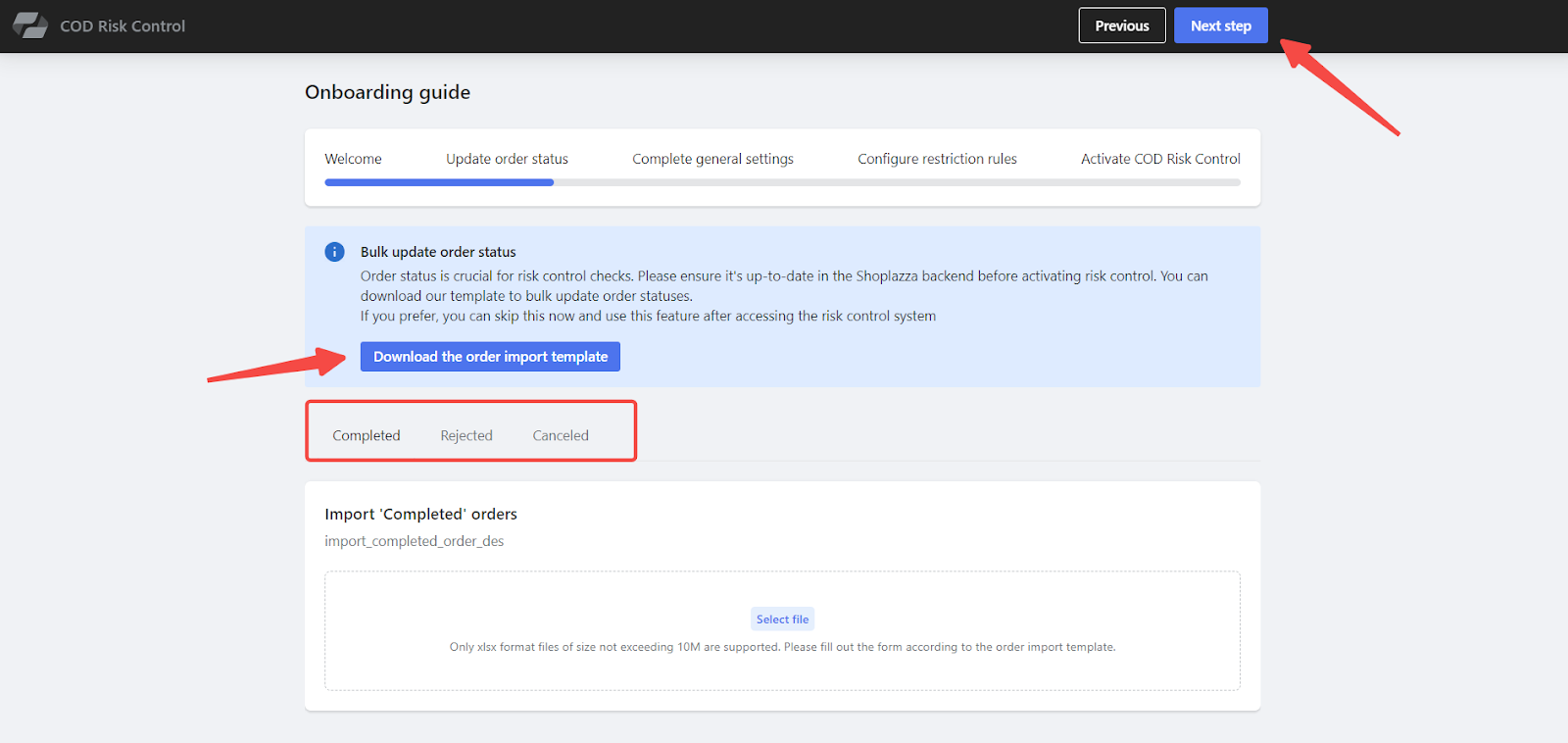
Note
This setup step can be done after activating COD Risk Control if preferred.
3. Complete General Settings:
- Historical Order Range: Define a period (from one month up to a year) to analyze customer data.
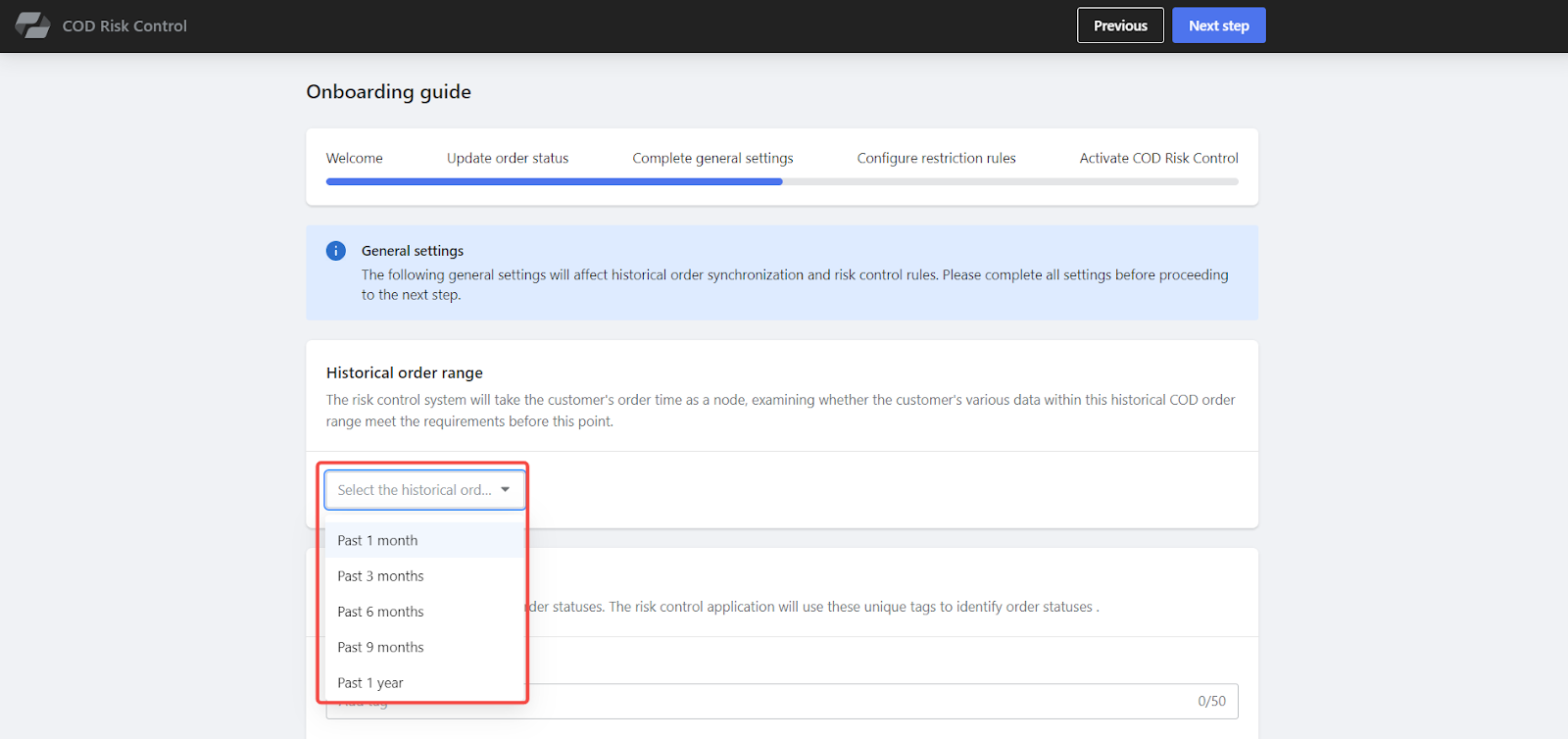
- Special Order Status: Improve your risk control strategy by utilizing tags for distinct order statuses. To add a tag, simply press the Enter key. This functionality enables the risk control app to pinpoint orders with particular conditions, like refused or voided ones. To categorize an order as voided, for instance, insert the relevant identification tag. Such tagged orders, including those marked as voided, will be omitted from risk control analytics, guaranteeing precise evaluations.
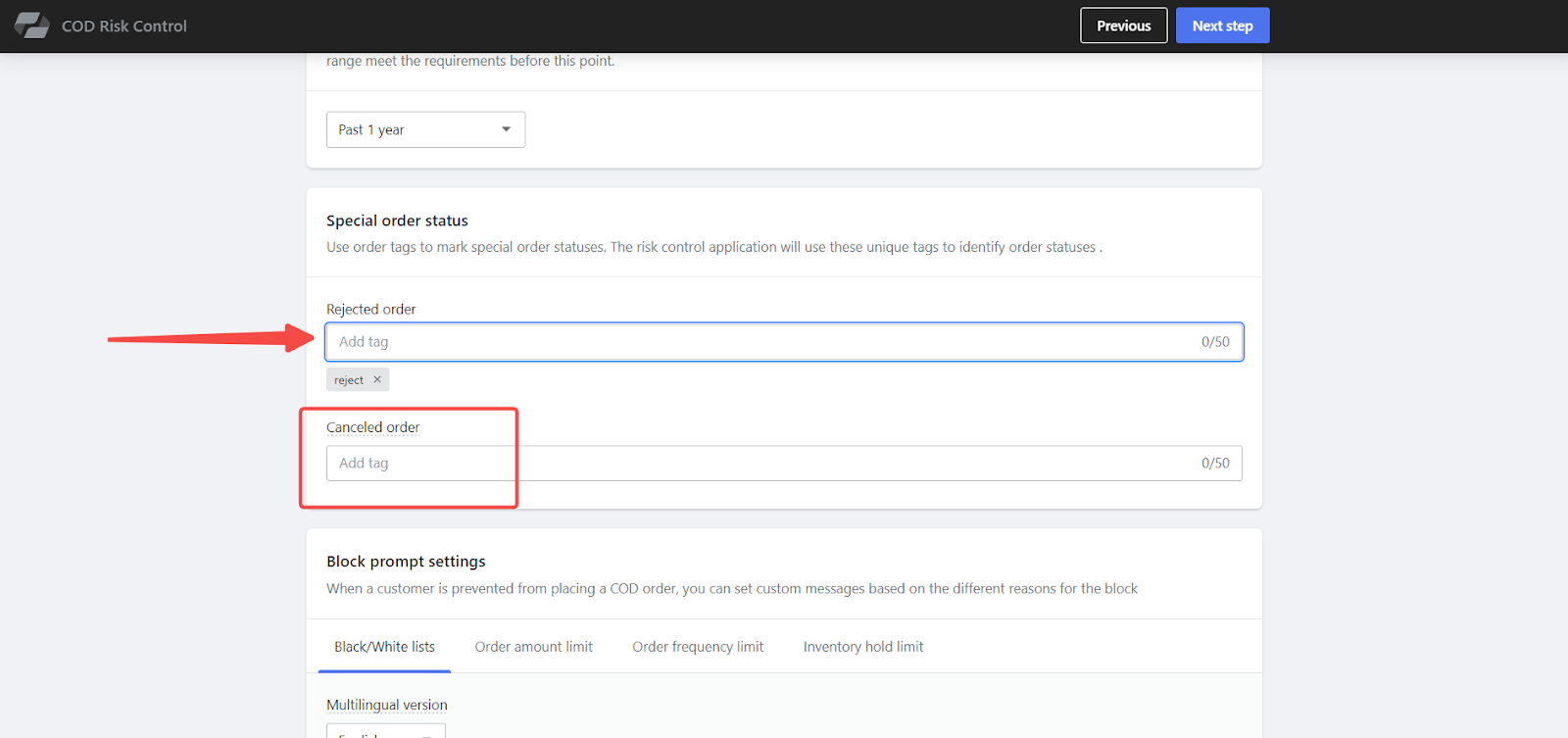
Note
Finalizing the historical order range and tags for rejected orders is necessary before moving on to the next configuration step.
- Block Prompt Settings: Customize the notifications presented to customers when their COD payment option is restricted due to risk control verifications not being met. This customization feature enables you to craft specific messages tailored to the cause of the restriction, such as inclusion on Black/White lists, exceeding Order amount limits, surpassing Order frequency limits, or breaching Inventory hold limits. English is required for these messages, but adding translations in Arabic, Polish, Czech, Hungarian, Romanian, and Bulgarian is optional, allowing you to serve a broad spectrum of customers.
- Once these settings are configured, proceed to Configure restriction rules to establish the safeguards that will protect your transactions from potential risks.
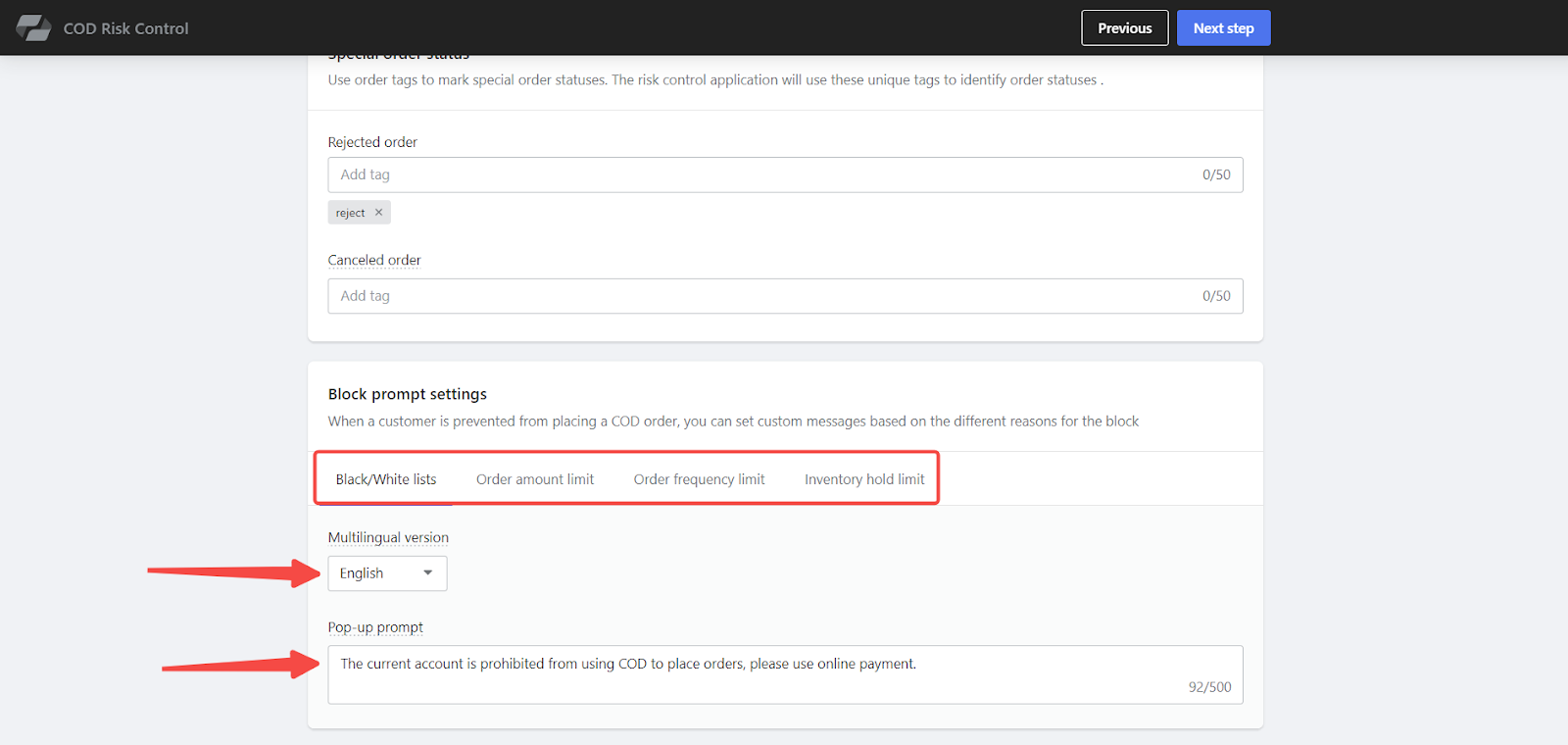
4. Configure restriction rules: Start by setting rules to examine orders upon placement, enhancing the security of COD transactions. The system is equipped to enforce four distinct types of restrictions: Black/White lists, Order amount limit, Order frequency limit, and Inventory hold limit.
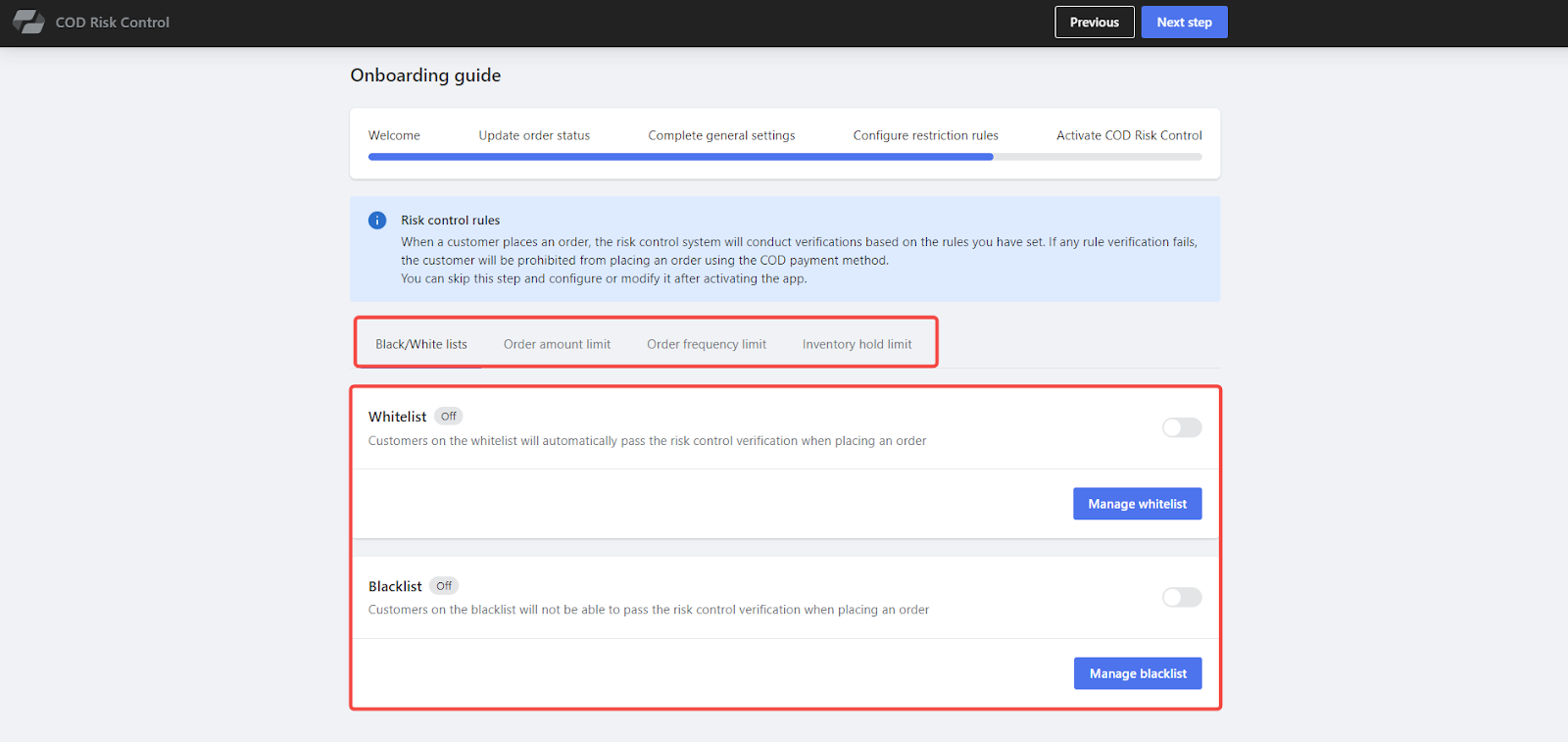
Note
Adjustments to these settings can be made later, once risk control is active.
5. Whitelist Management: Select Add customer to fine-tune your settings to determine which customers are permitted to use COD, leveraging their email or phone number for identification.
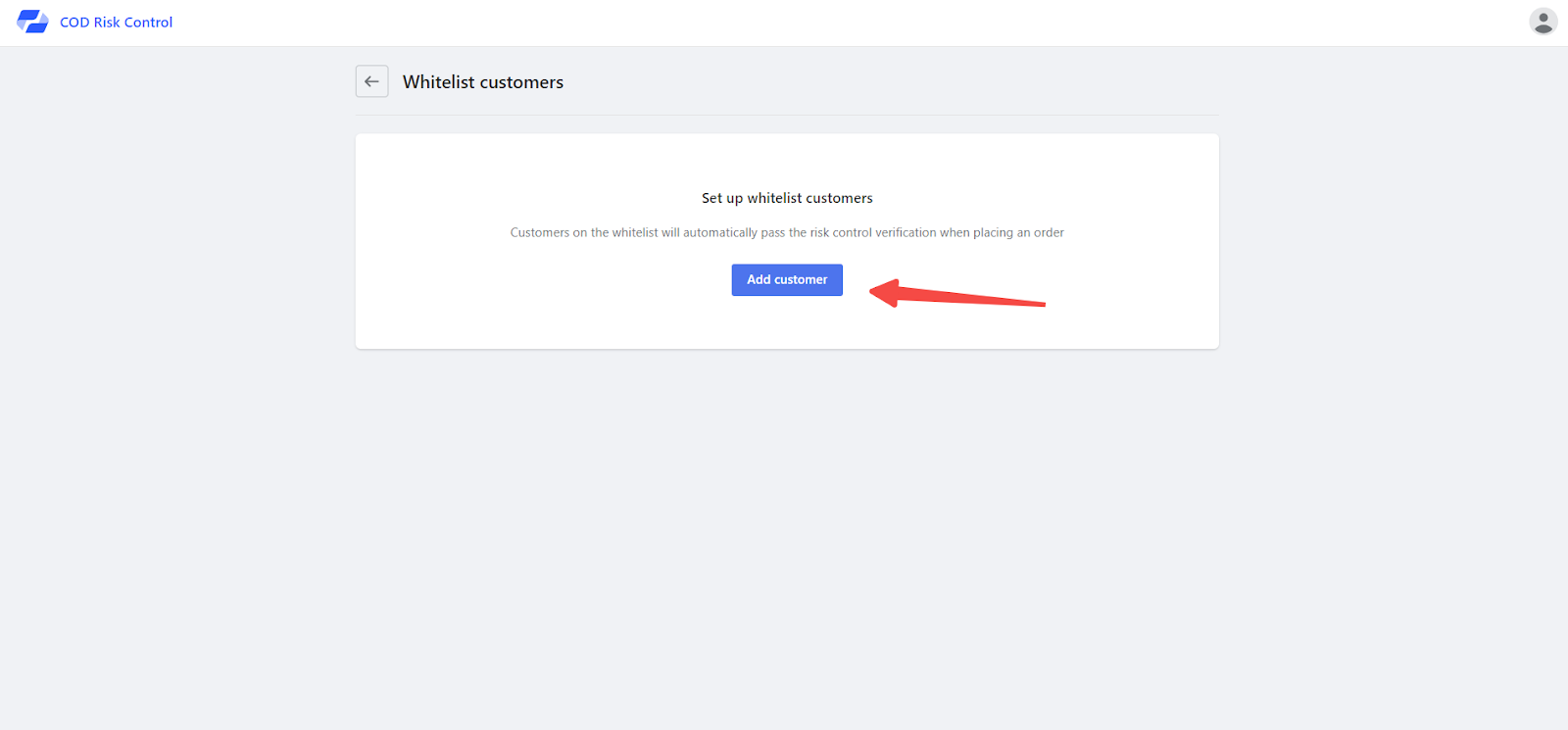
- The popup window provides the option to identify customers using either email or phone number. You can manually enter email addresses or utilize a bulk import feature for efficiency. Additionally, set the allowable instances a customer on the whitelist can bypass risk control measures.
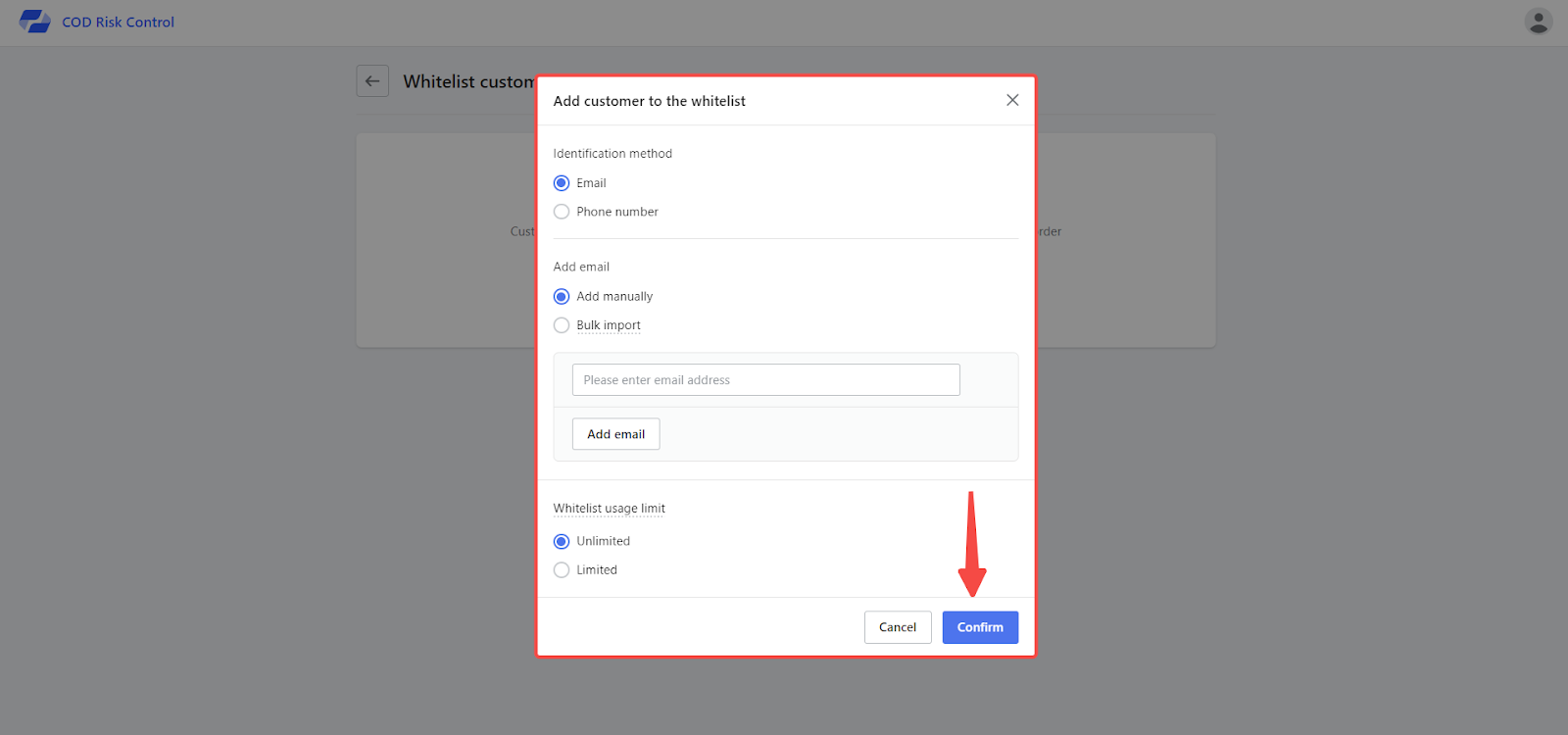
6. Blacklist management: This process follows the same steps as whitelist management. Simply go to the blacklist section, and by clicking Add customer, you can restrict specific individuals from using COD by blocking their email or phone number.
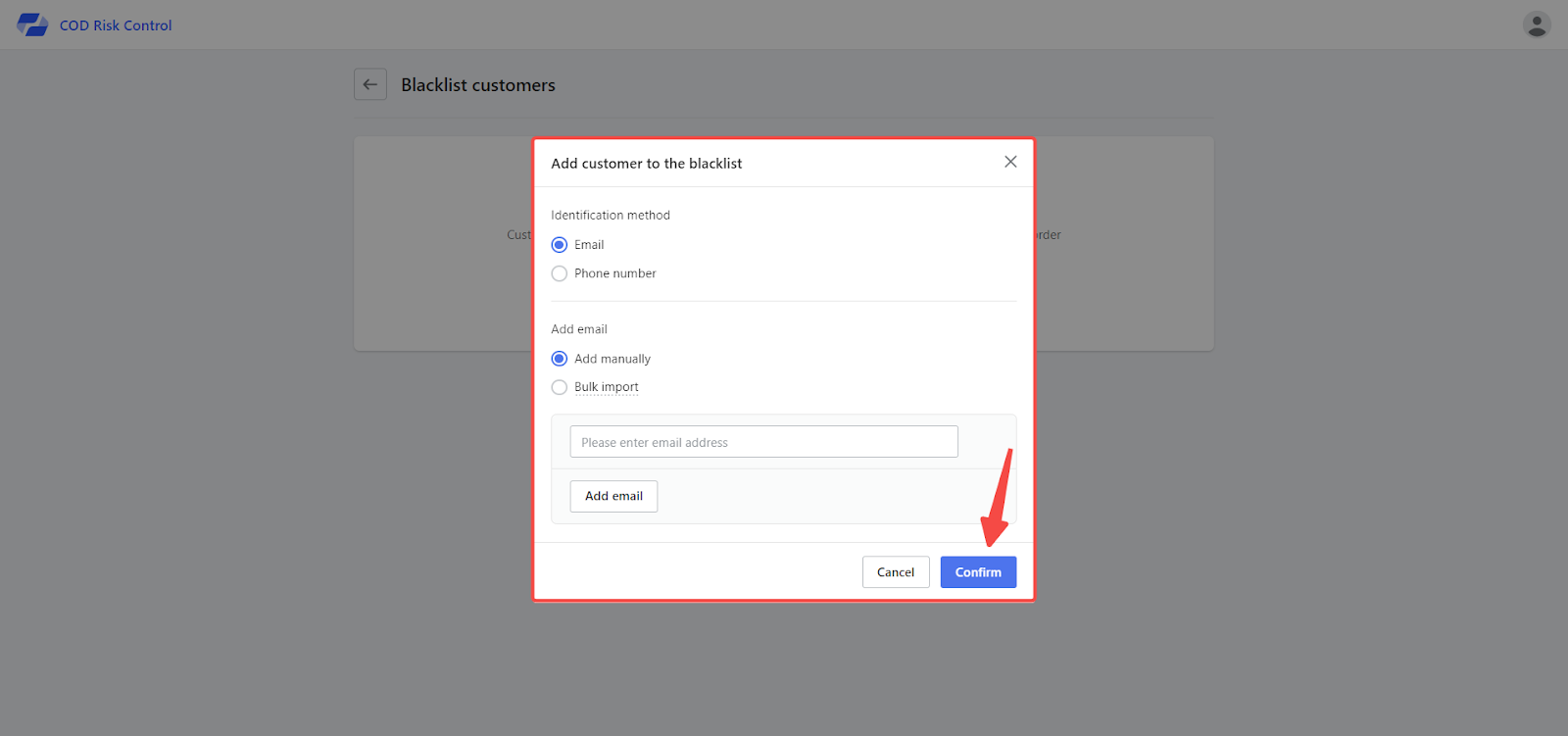
7. Activate white / blacklist options: After setting up your restrictions, remember to apply the settings by moving to the Next step to Activate COD Risk Control.
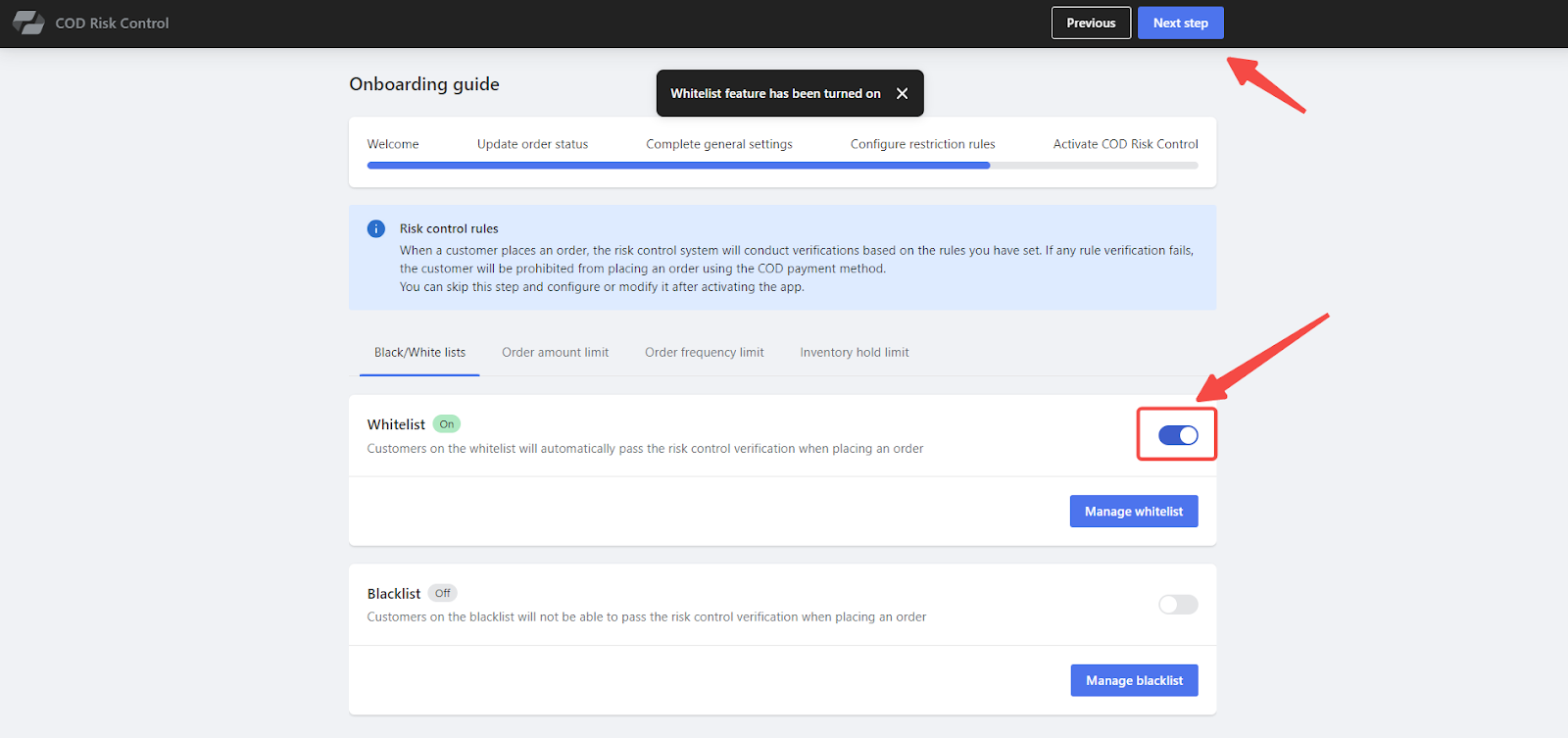
8. Activate COD Risk Control: Once you're satisfied with your setup, enable the COD risk control feature by toggling it on. If you need to refine any settings, feel free to go back and make adjustments. To finalize and activate your risk control parameters, simply click Confirm.
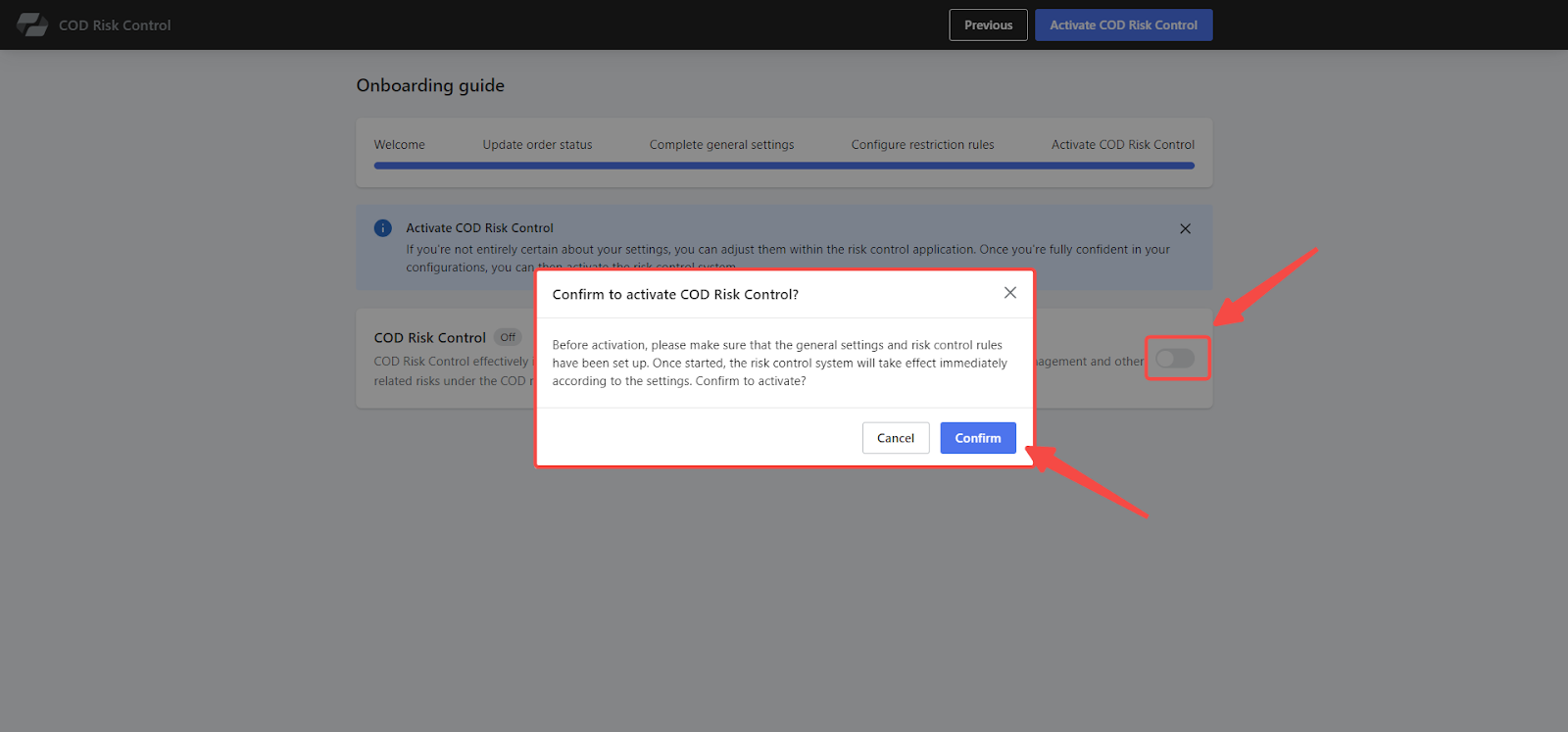
Activating and Utilizing COD Risk Control
Once you've completed the setup, it's time to activate your COD risk control settings to begin efficiently managing COD transactions. The interface is divided into key sections: Risk control rules, Data dashboard, Order management, and General settings. This structure ensures you have all the tools at your disposal for detailed transaction management.
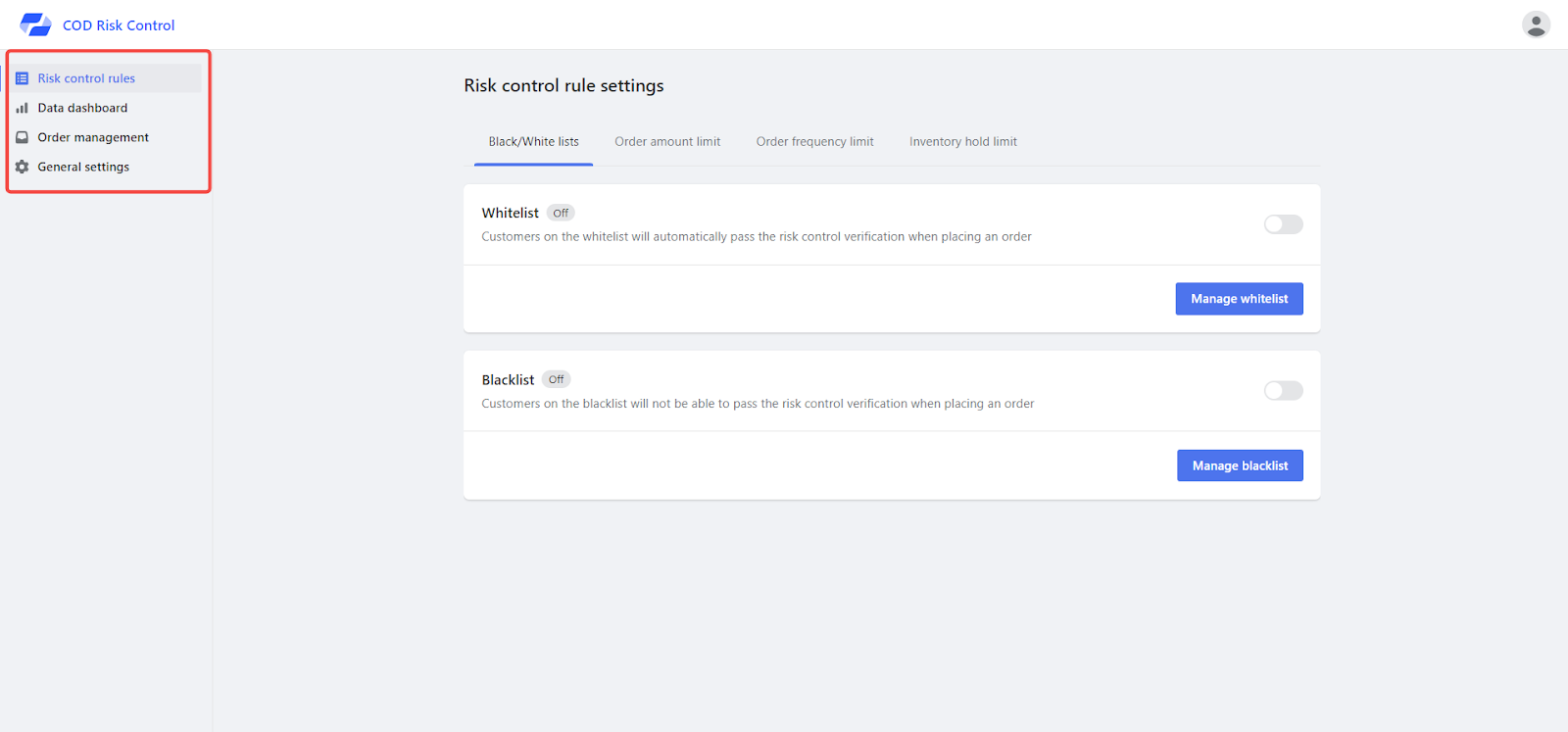
1. Risk Control Rule
- Set specific rules that will be checked during the order placement, with options for managing blacklists/whitelists, order amount limits, order frequency limits, and inventory hold limits.
Note
You can add customers' phone numbers or emails to the blacklist or whitelist to manage their ability to use COD.
-
Blacklist/Whitelist:
- Whitelist: Customers listed here will bypass risk control checks upon placing an order, facilitating seamless transactions for trusted customers.
- Blacklist: In contrast, customers listed here will be blocked from completing an order through COD, effectively reducing the risk of problematic transactions.
-
Order Amount limit:
- Establish minimum and maximum thresholds for COD transactions to address risks related to unusually low or high order amounts.
-
Order Frequency limit:
- By controlling how frequently a customer can place orders, you help prevent misuse such as repeated order submissions.
-
Inventory hold limit:
- Verifying inventory availability for orders ensures that stock levels are appropriately managed and allocated.
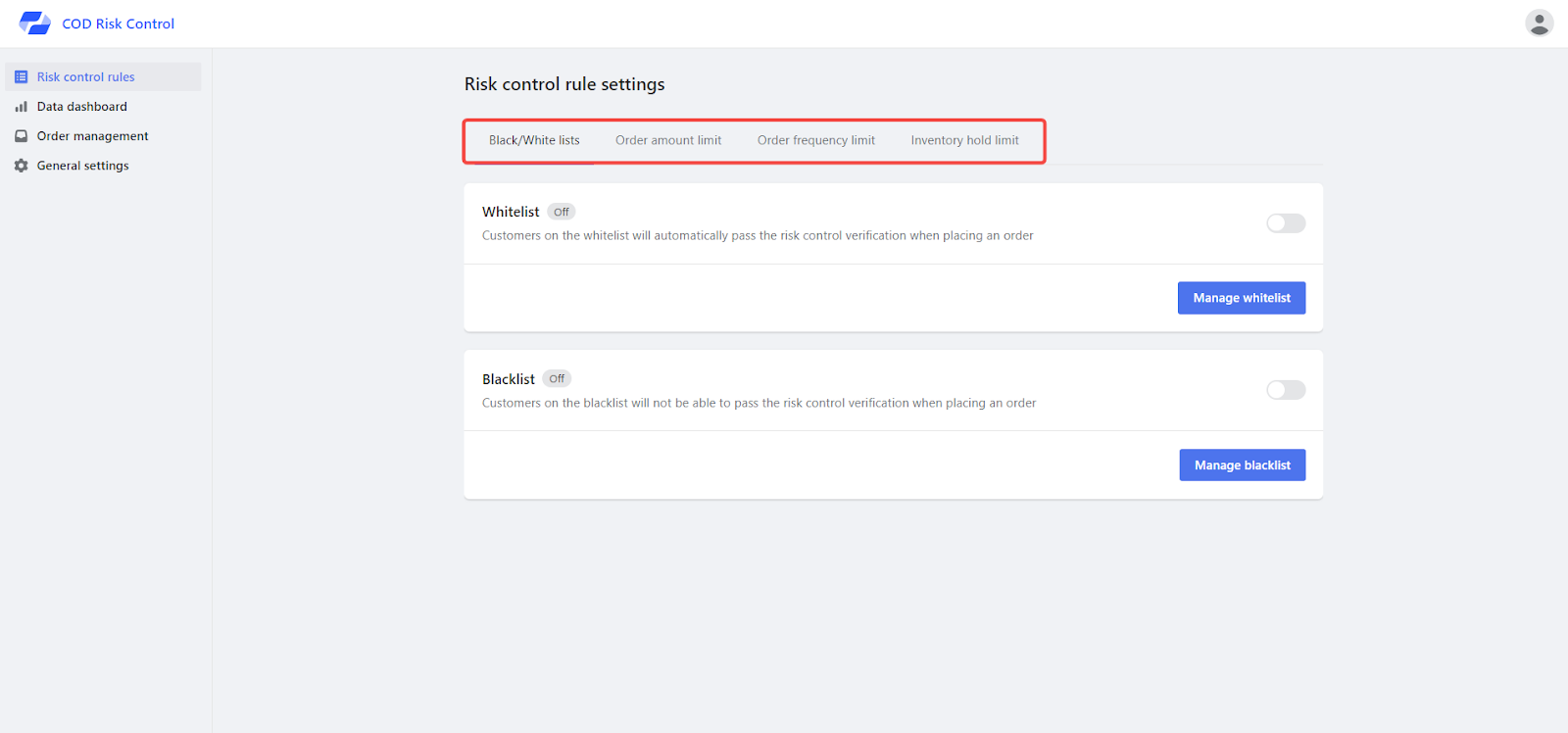
2. Data Dashboard
- Gain insights into COD transaction patterns and risk evaluations. The dashboard offers a comprehensive view of risk control effectiveness and flagged transactions, equipping you with the information needed for data-driven decisions.

- To view detailed risk assessments for orders, you can access both the order details and the risk control report directly from the order list. By clicking on View Order Details (eye icon), you'll be directed to the order's detail page in the admin.
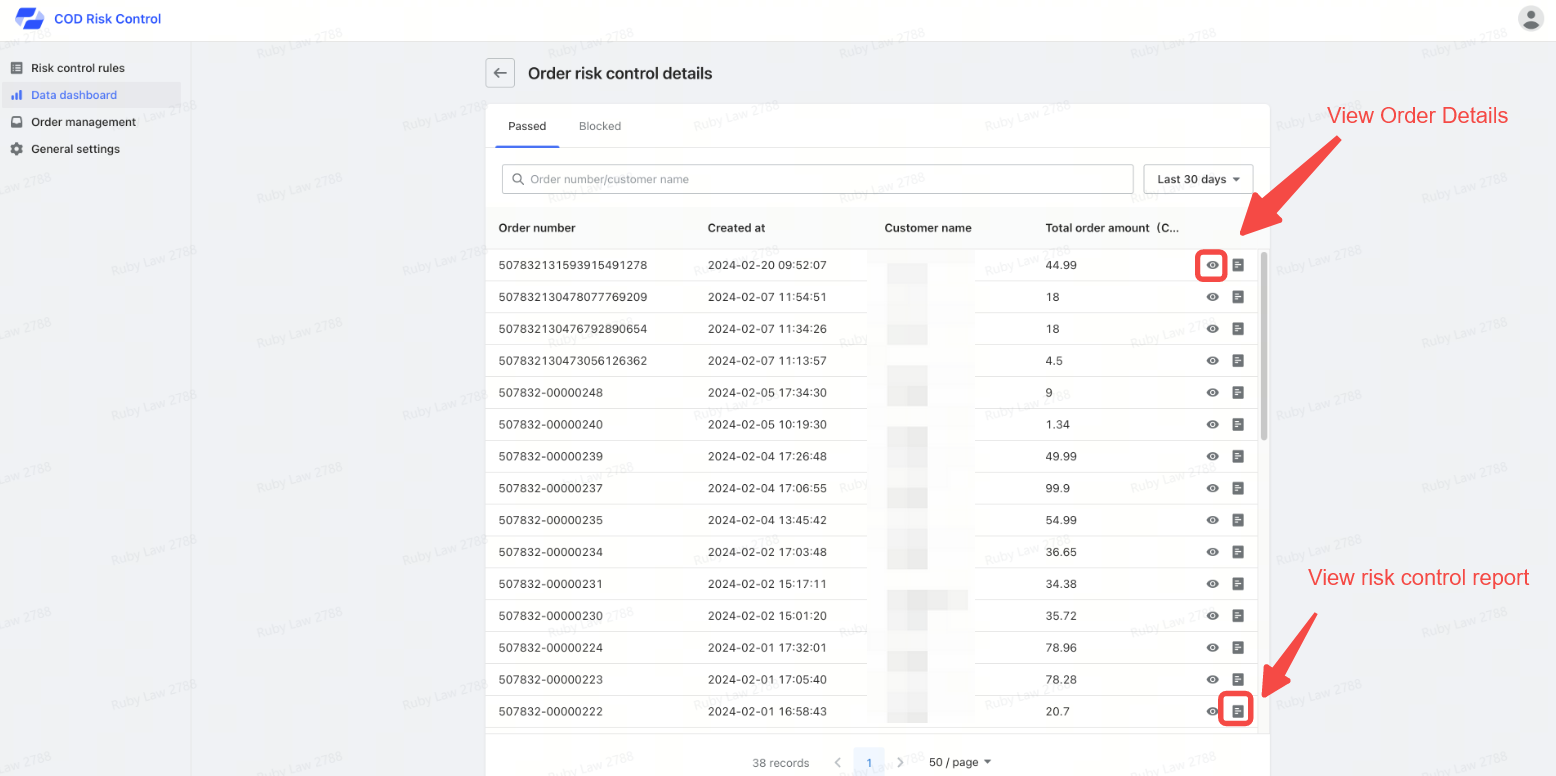
- By clicking on the View risk control report, you will see the risk assessment results for each order, including the rules applied at the time the order was created and the outcomes of the risk evaluation under those specific rules.

3. Order Management
- Simplify backend operations with the template provided for batch updates of order statuses, enhancing efficiency and accuracy.
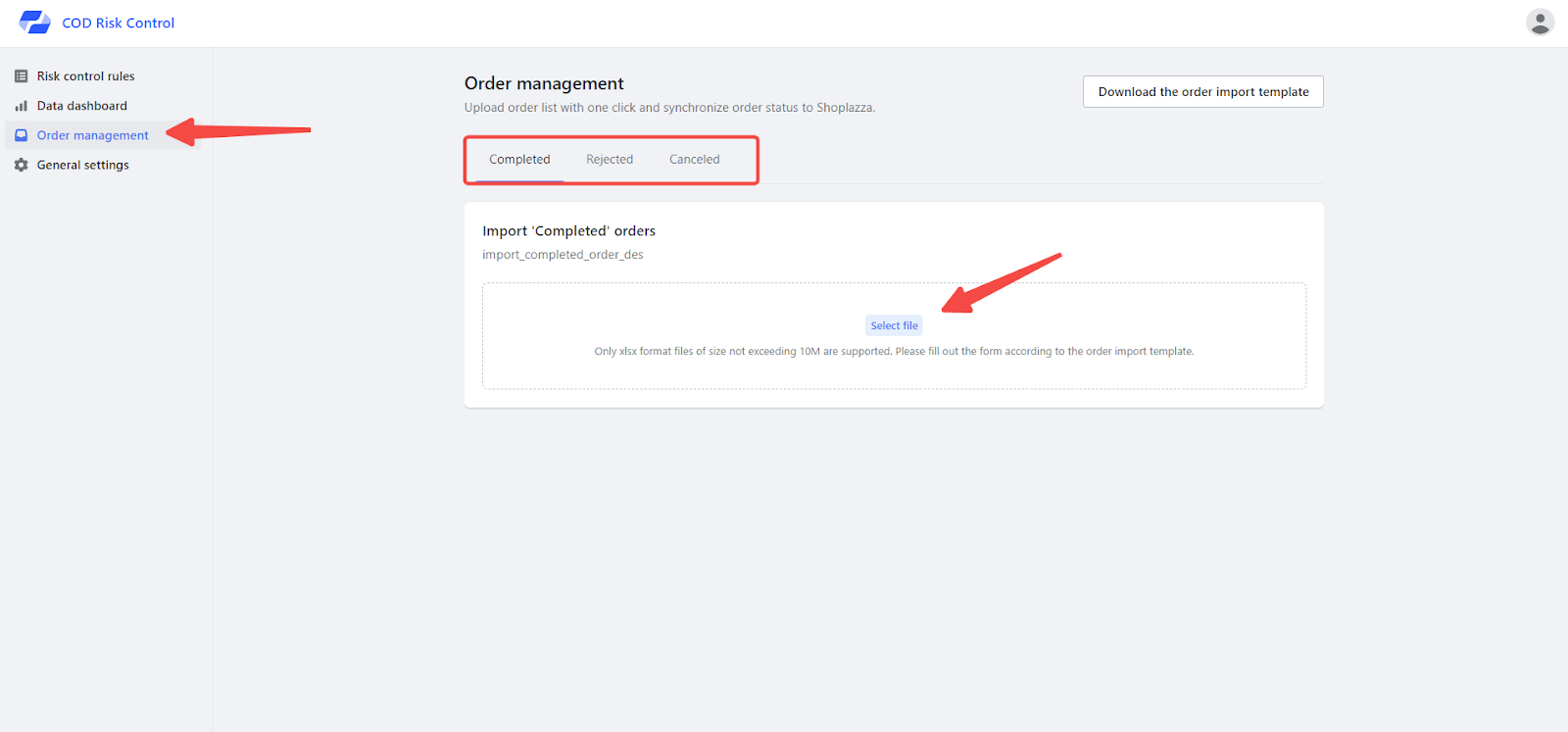
4. General Settings
- Customize the COD Risk Control features to suit your business operations, including system control, setting a historical order range, applying special order statuses, and customizing messages for blocked COD options.
- Features:
- COD Risk Control: Acts as the master switch for activating/deactivating the risk control system.
- Historical Order Range: Reviews customer data within a specified range before the order date.
- Special Order Status: Uses order tags to mark and recognize special statuses.
- Block prompt settings: Allows customization of messages for COD order blocks based on different interception reasons.
- Features:

By following this guide, you can effectively utilize the COD Risk Control application to manage and mitigate the risks associated with COD payments, ensuring safer transactions, protecting your finances, and building customer trust for a more sustainable e-commerce environment.



Comments
Please sign in to leave a comment.